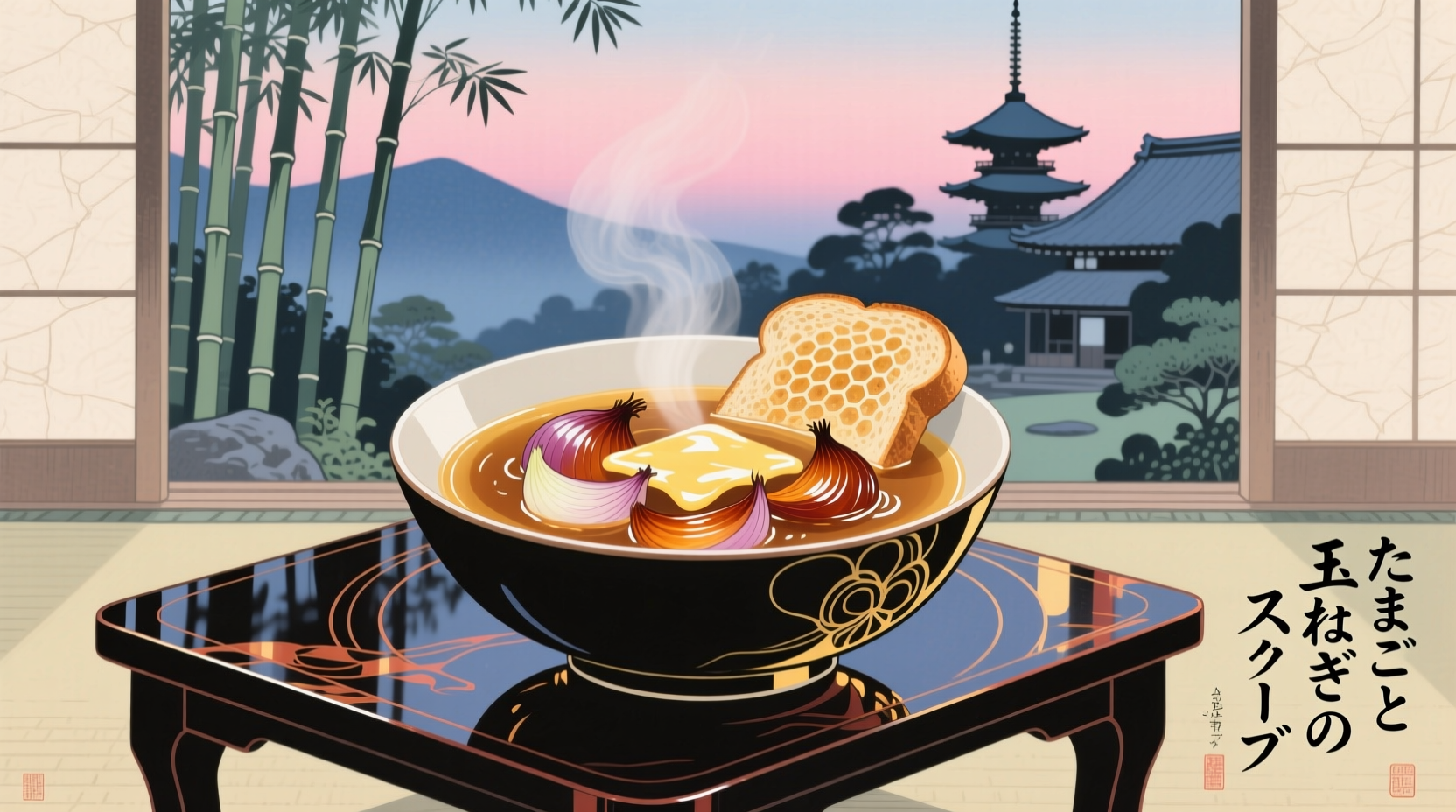Debunking the Japanese Onion Soup Myth
When searching for "onion soup japanese," many expect a traditional Japanese counterpart to France's famous caramelized onion creation. This misconception stems from global familiarity with French onion soup and assumptions that every cuisine has an equivalent dish. The reality is more nuanced: Japan never developed a standalone onion soup tradition, but has incorporated onions into specific dishes since Western ingredients arrived in the 19th century.
Onions in Japanese Culinary History: A Timeline
Unlike France where onions have been culinary staples for centuries, Japan's relationship with onions is relatively recent:
- Pre-1850s: Onions were virtually absent from traditional Japanese cuisine, which relied on native alliums like negi (Japanese long onions) and rakkyo (bulb onions)
- Meiji Restoration (1868): Western ingredients introduced as Japan modernized; onions initially considered "foreign" and somewhat controversial
- Early 1900s: Onions gradually incorporated into yōshoku (Western-influenced Japanese dishes) like hambāgu and korokke
- Post-WWII: Increased Western influence led to broader onion adoption in everyday cooking
- Present day: Onions appear in specific dishes but remain secondary to traditional Japanese alliums
Authentic Japanese Dishes Featuring Onions
While no "Japanese onion soup" exists as a traditional dish, these authentic preparations showcase onions in Japanese cooking:
Negimaki: The Star Onion Dish
This elegant dish features thinly sliced beef wrapped around scallions (negi), then grilled or broiled. The scallions' mild sweetness balances the savory meat, creating a harmony that defines Japanese flavor principles. Unlike French onion soup's dominant onion presence, negimaki uses onions as a supporting element.
Miso Soup Variations
Traditional miso soup rarely features onions, but modern interpretations sometimes include:
- Thinly sliced negi as garnish
- Western-style onion additions in home cooking
- Regional variations in western Japan where onion usage is slightly more common
Simmered Dishes (Nimono)
Onions occasionally appear in Japanese simmered dishes, particularly in:
- Yakiniku dipping sauces
- Some regional stews
- Modern interpretations of Western dishes
| Characteristic | French Onion Soup | Japanese Onion Preparations |
|---|---|---|
| Primary onion type | Yellow or white onions | Negi (Japanese long onions), sometimes Western onions |
| Cooking method | Slow caramelization | Quick grilling, raw garnish, or brief simmering |
| Flavor profile | Deep umami, sweet, rich | Subtle sweetness, fresh, supporting role |
| Cultural significance | National dish | Modern addition to specific dishes |
| Broth base | Beef stock | Miso, dashi, or light meat stocks |
Creating a Japanese-Inspired Onion Soup
While not traditional, you can create a Japanese-inspired onion preparation that respects culinary principles:
Japanese Onion Dashi Broth Recipe
This adaptation maintains Japanese flavor balance while incorporating onions:
- Ingredients: 2 large Western onions, 4 cups dashi, 2 tbsp mirin, 1 tbsp soy sauce, 1 negi (for garnish)
- Preparation:
- Slice onions thinly and separate into rings
- Lightly sauté in neutral oil until just translucent (not caramelized)
- Add dashi, mirin, and soy sauce; simmer 10 minutes
- Garnish with finely sliced negi
This preparation differs significantly from French onion soup by avoiding deep caramelization, using dashi instead of beef stock, and maintaining the onion's fresh character rather than transforming it through prolonged cooking.

Why Onions Play a Different Role in Japanese Cuisine
Several factors explain why Japan never developed an onion-centric soup tradition:
- Historical ingredient availability: Traditional Japanese cuisine developed without Western onions as staples
- Flavor philosophy: Japanese cooking emphasizes delicate balance rather than bold, singular flavors
- Alternative alliums: Negi and rakkyo provided sufficient onion-like flavors in traditional cooking
- Culinary priorities: Soup traditions centered around miso and clear broths rather than vegetable-based soups
According to culinary historian Elizabeth Andoh's research on Japanese ingredients, "The Japanese kitchen has always been selective about adopting foreign elements, integrating only those that complement existing flavor principles" (source: Japan Centre Culinary History).
Practical Tips for Using Onions in Japanese Cooking
When incorporating onions into Japanese-inspired dishes:
- Use negi (Japanese long onions) when possible for authentic flavor
- Avoid deep caramelization—Japanese cuisine values onions' fresh, mild sweetness
- Pair with dashi rather than heavy meat stocks
- Use onions as supporting elements rather than the main ingredient
- Consider regional variations—western Japan uses onions more frequently than eastern regions
Common Questions About Onions in Japanese Cuisine
Many home cooks have similar questions when exploring Japanese onion usage:











 浙公网安备
33010002000092号
浙公网安备
33010002000092号 浙B2-20120091-4
浙B2-20120091-4